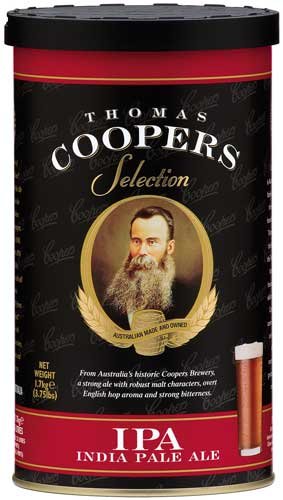So you've got a fairly bitter English style IPA on the card.
Look at ianh's spreadsheet and go from there.
BJCP guideline for an EIPA here (this will help you construct a recipe based on the style you wish to achieve - though because you have a kit base, some elements aren't relevant (like "using Pale Malt") - but it'll give you an idea of what flavour, hops and yeast to use):
13.1 English IPA [BJCP]
Appearance: Colour ranges from golden amber to light copper, but most are pale to medium amber with an
orange-ish tint. Should be clear, although unfiltered dry-hopped versions may be a bit hazy. Good head stand with
off-white colour should persist.
Aroma: A moderate to moderately high hop aroma of floral, earthy or fruity nature is typical, although the
intensity of hop character is usually lower than American versions. A slightly grassy dry-hop aroma is acceptable,
but not required. A moderate caramel-like or toasty malt presence is common. Low to moderate fruitiness, either
from esters or hops, can be present. Some versions may have a sulfury note, although this character is not
mandatory.
Flavour: Hop flavour is medium to high, with a moderate to assertive hop bitterness. The hop flavour should be
similar to the aroma (floral, earthy, fruity, and/or slightly grassy). Malt flavour should be medium-low to mediumhigh,
but should be noticeable, pleasant, and support the hop aspect. The malt should show an English character
and be somewhat bready, biscuit-like, toasty, toffee-like and/or caramelly. Despite the substantial hop character
typical of these beers, sufficient malt flavour, body and complexity to support the hops will provide the best
balance. Very low levels of diacetyl are acceptable, and fruitiness from the fermentation or hops adds to the overall
complexity. Finish is medium to dry, and bitterness may linger into the aftertaste but should not be harsh. If high
sulfate water is used, a distinctively minerally, dry finish, some sulfur flavour, and a lingering bitterness are usually
present. Some clean alcohol flavour can be noted in stronger versions. Oak is inappropriate in this style.
Mouthfeel: Smooth, medium-light to medium-bodied mouthfeel without hop-derived astringency, although
moderate to medium-high carbonation can combine to render an overall dry sensation in the presence of malt
sweetness. Some smooth alcohol warming can and should be sensed in stronger (but not all) versions.
Overall Impression: A hoppy, moderately strong pale ale that features characteristics consistent with the use of
English malt, hops and yeast. Has less hop character and a more pronounced malt flavour than American versions.
History: Brewed to survive the voyage from England to India. The temperature extremes and rolling of the seas
resulted in a highly attenuated beer upon arrival. English pale ales were derived from India Pale Ales.
Comments: A pale ale brewed to an increased gravity and hop rate. Modern versions of English IPAs generally
pale in comparison (pun intended) to their ancestors. The term “IPA” is loosely applied in commercial English
beers today, and has been (incorrectly) used in beers below 4% ABV. Generally will have more finish hops and
less fruitiness and/or caramel than English pale ales and bitters. Fresher versions will obviously have a more
significant finishing hop character.
Ingredients: Pale ale malt (well-modified and suitable for single-temperature infusion mashing); English hops;
English yeast that can give a fruity or sulfury/minerally profile. Refined sugar may be used in some versions. High
sulfate and low carbonate water is essential to achieving a pleasant hop bitterness in authentic Burton versions,
although not all examples will exhibit the strong sulfate character.
Vital Statistics:
OG FG IBUs SRM ABV
1050-1075 1010-1018 40-60 8-14 5.0-7.5%





